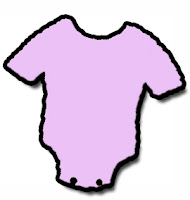 Clearly you wont need a high chair straight away, but while your in this whirlwind buying frenzy you might as well get one now. Considering your baby will most likely use their high chair at least once a day everyday until they are about three years old it is a good idea to do a bit of research.
Clearly you wont need a high chair straight away, but while your in this whirlwind buying frenzy you might as well get one now. Considering your baby will most likely use their high chair at least once a day everyday until they are about three years old it is a good idea to do a bit of research.
· Fold Flat - First you need to think about how much space you have in your house. High chairs normally take up a lot more room than a standard chair, and you cant push them under a table either, or they would be a low chair and that would kind of defeat the whole object! There are lots of chairs on the market that fold flat, look for one of these if you don’t have an awful lot of space.
· Tray or No Tray? – Many highchairs come with either an integral tray or a removable tray. I found that having a tray is a lot better as it puts the food in the right position for your child and makes it easier to reach. Also most trays have some kind of lip around the edge to help food bowls from being pushed off, and believe me this will happen a lot!.
· Wipe Clean Surface – This is essential as your chair will get covered in food practically every time your child has a meal.
· Height Adjustability – This can be useful if you will be positioning your child in different locations to eat and want them to be at the same level as everyone else, for example we sometimes let our daughter eat in the living room and we can lower her down to the same level as everyone else sitting in sofas and comfy chairs.
· Ability to Recline – We found that this was a useful feature when our daughter was young and still having milk from a bottle, although now that she is older we do not use the feature at all.








